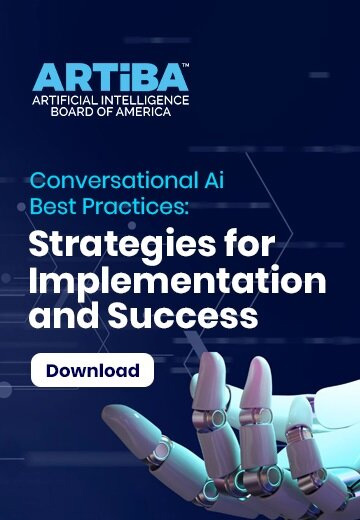How Spotify’s Engineers Likely Built the AI Defense Against 75 Million Spam Tracks

When Spotify confirmed that it had removed more than 75 million AI-generated spam tracks, it revealed a reality that every large-scale digital platform now faces: the need to defend itself against algorithmic misuse at industrial scale. The action was less about content moderation and more about AI systems managing the side effects of other AI systems. Understanding how Spotify’s engineers may have approached this challenge offers a useful blueprint for machine-learning practitioners building integrity layers into creative or user-generated ecosystems.
1. Defining the Engineering Problem
At the core, Spotify’s challenge was a multi-objective optimization problem:
- Detect and suppress AI-generated spam while preserving legitimate creative uploads.
- Protect royalty distribution fairness without penalizing genuine independent artists.
- Maintain low latency in upload-to-publish pipelines.
In engineering terms, this required a content-integrity layer that could ingest millions of audio files per day, assign risk scores, and trigger the right enforcement or review path, all within minutes. False positives would anger artists; false negatives would erode platform trust.
2. System Architecture Overview
Spotify likely designed a tiered architecture combining rule-based gates, machine-learning models, and human-in-the-loop verification.
-
Upload & Metadata Gateway
- Performs sanity checks: file duration, bitrate, metadata completeness, and rate-of-submission limits.
- Adds basic reputation weighting based on distributor identity, previous takedowns, and account age.
-
Content Analysis Layer
- Runs lightweight audio fingerprinting and near-duplicate detection.
- Converts waveforms into spectrogram embeddings using contrastive audio encoders.
- Flags potential clones, low-complexity noise, or over-templated compositions.
-
Behavioral & Graph Analytics Layer
- Monitors streaming patterns for anomalies such as 30-second play bursts, synchronized replay loops, or playlist stuffing.
- Builds graphs linking uploaders, playlists, and listener accounts to identify collusive clusters.
-
Decision Engine & Risk Scoring
- Aggregates evidence from the above layers using an ensemble or stacked-model approach.
- Outputs risk categories that determine automated takedown, delayed monetization, or manual review.
-
Feedback and Learning Loop
- Feeds reviewer outcomes back into model retraining pipelines to reduce bias and improve recall over time.
This structure allows progressive filtering: cheap rules remove obvious spam early; expensive deep-learning models process only ambiguous or high-impact content.
3. Audio-Level Intelligence
Spam detection begins with what the audio itself reveals. Spotify’s engineers would use a mix of signal-processing heuristics and deep-representation learning.
Key techniques likely employed:
- Perceptual Hashing: Generates compact signatures to detect duplicates and micro-variants of the same track uploaded repeatedly under different names.
- Spectral Complexity Analysis: Measures variance and frequency richness; synthetic spam often shows repetitive, low-entropy spectral patterns.
- Temporal Structure Modeling: Identifies loops or silence padding that mimic streaming-threshold durations.
- Embedding Similarity Scoring: Uses pre-trained encoders (possibly built on Wav2Vec 2.0 or CLAP-style models) to compare new tracks to known works for plagiarism or AI-generated mimicry.
- Voice-Clone Detection: Computes similarity metrics between vocals and registered artist voiceprints to flag impersonations.
Such models can run on distributed GPU clusters optimized for inference speed, producing probability scores of “synthetic generation,” “duplication,” and “impersonation.”
4. Behavioral Modeling and Fraud Detection
Audio features alone are insufficient; behavior often gives the strongest signal of abuse. Spotify likely integrates user-behavior analytics derived from streaming telemetry.
Signals monitored might include:
- Upload Velocity: Sudden catalog growth from a new distributor.
- Streaming Consistency: Unnaturally uniform session lengths or identical play sequences across thousands of devices.
- Geographical Dispersion: Same uploader being streamed predominantly from one subnet or data center.
- Playlist Injection: Frequent addition of the same track into low-follower playlists created within minutes of each other.
Machine-learning models such as gradient-boosted trees or temporal convolutional networks can process these tabular and sequential features. Spotify’s data-science stack already handles personalization and recommendation at scale; extending it to abuse detection would reuse that infrastructure.
5. The Multi-Model Decision Framework
A single classifier cannot capture the diversity of spam behaviors. Spotify’s engineers likely built an ensemble framework that blends three major dimensions:
| Model Type |
Input Focus |
Example Algorithms |
Output |
| Content Model |
Spectrogram & embeddings |
CNN, Transformer, CLAP encoder |
Synthetic/clone probability |
|
Behavioral Model
|
Play and upload telemetry
|
XGBoost, LSTM |
Fraud likelihood |
|
Policy Rule Layer
|
Metadata & account info
|
Declarative logic |
Compliance flags |
The risk score can be expressed as:
R = wcRc + wbRb + wpRp
Where Rc, Rb, and Rp are outputs from the content, behavioral, and policy layers respectively. Thresholds determine whether to automatically block, hold, or escalate a track.
This modular architecture allows Spotify to adjust sensitivity dynamically—for example, tightening rules during known spam waves or relaxing them for verified distributors.
6. Human-in-the-Loop Operations
Even the best models misclassify. Spotify would maintain reviewer consoles displaying waveform snapshots, spectrograms, metadata diffs, and similarity explanations. Reviewers can confirm or override machine judgments.
An active-learning pipeline samples high-uncertainty or newly emerging spam styles for manual labeling. The corrected labels then retrain the content and behavioral models nightly or weekly.
This loop maintains balance: automation provides scale, humans provide context.
7. Transparency, Provenance, and Metadata Governance
Alongside detection, Spotify has implemented AI-content disclosures through an industry standard developed with DDEX. From a data-engineering standpoint, this means extending the metadata schema to include fields like:
json
"ai_involvement"
: {
"vocals_generated": true,
"lyrics_generated": false,
"instrumentation_generated": true,
"model_source": "Suno",
"artist_consent_id": "abc123"
}
Tracks missing required disclosures or consent artifacts can be automatically flagged before monetization. Integrating provenance data into metadata also simplifies downstream auditing, ensuring that transparency is programmatically enforceable rather than policy-based alone.
8. Economic and Policy Controls as Engineering Parameters
Spam detection is intertwined with economic mechanics. Spotify’s minimum-stream threshold for royalty eligibility acts as a rule-based control that engineers can encode in the payout pipeline.
The engineering objective becomes reducing the attack surface by making small-scale exploitation unprofitable. Even if detection isn’t perfect, the economics discourage abuse.
Policy variables, such as royalty rates, distributor reputation tiers, and escalation SLAs—feed directly into configuration tables consumed by the enforcement service. This design ensures that business teams can adjust parameters without retraining models.
9. Evaluation Metrics and Continuous Validation
To operate responsibly, engineers must measure both detection accuracy and creative fairness. Typical metrics likely tracked include:
-
Precision and Recall on labeled datasets of known spam vs. legitimate music.
- False-Positive Rate for verified artists and approved distributors.
- Impact Metrics: share of royalties diverted back to genuine artists, user-trust scores, and playlist quality metrics.
- Drift Indicators: feature-distribution changes that hint at new attack tactics.
Spotify’s platform probably includes real-time dashboards comparing streaming anomalies before and after major model releases, ensuring that no model degrades listening quality or penalizes niche genres.
10. Privacy and Rights Safeguards
Running large-scale integrity models requires careful data governance. Spotify’s engineers must ensure:
- Only hashed or anonymized listener identifiers enter modeling pipelines.
- Artist voiceprint databases used for impersonation detection are access-controlled and encrypted.
- Every enforcement decision logs the model version, feature snapshot, and reviewer ID for auditability.
These practices align with responsible-AI principles emphasizing transparency, accountability, and proportionality.
11. Scaling Lessons for AI Engineers
Spotify’s likely approach illustrates several transferable lessons for AI-system builders:
-
Layered Defense Is Mandatory. Combine heuristics, deep learning, and policy logic rather than relying on a monolithic classifier.
- Feedback Loops Sustain Accuracy. Spam evolves; models must continuously learn from reviewer outcomes.
- Economic Design Complements Technical Design. Incentive-compatible policies reduce exploit attempts before algorithms even act.
-
Transparency Is a Data-Modeling Problem. Provenance and disclosure can be engineered through metadata schemas and validation rules.
-
Ethics Must Be Operationalized. Responsible-AI principles gain force only when encoded in production pipelines.
12. The Broader Implication for AI in Creative Platforms
Spotify’s effort underscores a shift in AI engineering priorities. Building generative models is no longer the frontier; maintaining ecosystem integrity against generative misuse now defines the next challenge. Music, video, and text platforms will all require AI-for-AI infrastructure capable of interpreting signals across modalities, understanding behavior graphs, and applying dynamic governance policies.
By embedding governance and detection into the technical fabric of its platform, Spotify demonstrates how modern AI engineering must evolve, from optimizing engagement to optimizing authenticity.
Conclusion
Spotify’s removal of 75 million AI-generated spam tracks illustrates what it means to operationalize ethical AI at scale. The likely architecture combines advanced signal processing, behavioral analytics, ensemble modeling, and human oversight into a cohesive defense framework.
For AI engineers, the case is a reminder that platform quality depends not only on the sophistication of generative tools but also on the rigor of the systems that regulate them. As generative AI expands across domains, the real innovation will lie in building self-defending ecosystems—where machine intelligence creates, evaluates, and governs with equal competence.





